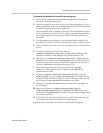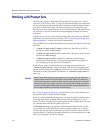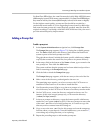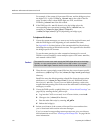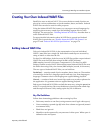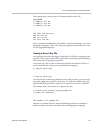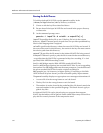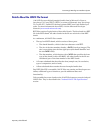
Customizing & Branding Your ReadiVoice System
Proprietary & Confidential 173
The example below shows part of a German predefined key file:
LANG=GERMAN
0; number_0; null.wav
1; number_1; eins.wav
2; number_2; zwei.wav
.
.
.
107; 30th; dreizigste.wav
108; der; der.wav
109; ein; ein.wav
110; eine; eine.wav
Due to grammatical differences, the number of entries needed may vary from
language to language. This is why Polycom supplies the predefined key files
for the supported languages.
Creating a Generic Key File
An application can take advantage of indexed WAVE files for outgoing voice
prompts. The format of the key files is identical to the format of predefined key
files except that no language is specified.
You create a key file in order to build an application indexed WAVE file. It
should look like this, without a line specifying the language:
0; name_00; waveFile_00
.
.
.
x; name_xx; waveFile_xx
Your key file can contain any number of entries, and, of course, you can specify
any name (
name_xx
) you like for each entry. As with the predefined key file,
edit the
waveFile_xx
field for each entry to reference the correct sound file.
The example below shows part of a a generic key file:
0; welcome to the system;cf_you_subs_prompt.wav
1; howdy y’all; howdy.wav
.
.
.
107; goodbye y’all; goodbye.wav
Because no grammar rules are employed during playback, the number of
entries in generic key files can be the same from language to language.



